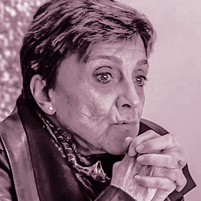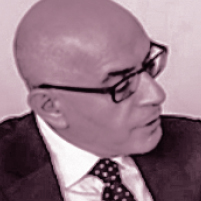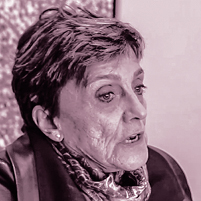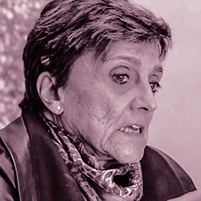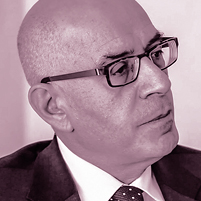Yes, of course.
Neither government nor business will undertake any enterprise that fails to create added value, and that’s precisely as it should be. Consequently, if we’re suggesting that government and business should have positive, constructive and productive functions in the field of culture, we have to scrutinize their added value. This debate is ongoing in Europe and America. Private sector museums in America charge an admission fee. Some public museums offer free entry, others do not. America is quite an unusual example here, which is why it merits attention. Although entry is free to the Metropolitan Museum in New York, there are signs inviting you to make a donation at the entrance. Inspired by your visit, you may well drop a contribution into the collection box as you leave, even if you’d walked past it on your way in. Washington, on the other hand, takes pride in offering entirely free entry. This debate is ongoing in France too; and there’s no need to mention how great an income stream museums provide there. Paris alone attracts millions of tourists every year, and France earns a massive amount from these museums. Turkey hasn’t reached that stage yet. And why not? In the West, museum visits are a natural extension of education, because education isn’t solely based on acquiring a profession or a trade. Education there includes elements that make you want to go to the theater to see a play and visit a museum. That’s the first reason.
The second has to do with the income levels of nations. Since it would be unreasonable to expect societies with very different income levels to show the same behavior, government in Turkey has a big role to play in this field. Just as GDP per capita plays a major part in determining behavior, the accumulation of capital is an important determinant of the function business will assume in the sphere of culture.
Until recently, there were hardly any collectors in Turkey; it was a country where the idea of establishing and running a museum – like you did – hadn’t occurred to anyone. Because business had virtually no surplus capital to allocate to such a purpose. It was only in the 2000s, when Istanbul became a financial center that attracted capital and became a metropolis in the true sense and the wealth of great families rose further, that smaller, independent galleries emerged.
There are a few more things we must add here. First, there’s the social responsibility issue, which is a relatively new concept and second, philanthropy. Foundations and endowments have historically commanded enormous wealth in Turkey. But they were never modernized. This is not a nation that has embraced philanthropy or humanism. Capitalists – businesspeople, whatever you might wish to call them – had a very limited vision in this respect until the 1950s and even the 1970s. There might have been exceptions, though. At any rate, when philanthropy emerged it first took the form of building schools and other projects of this kind. Investing in the cultural arena is a very recent development. Why is that?
Research actually vindicates our society’s credentials for charity. But philanthropic support of culture is very limited, yes.
There’s an important concept that must be introduced here: “creative industries.” Once culture’s capacity to add value was recognized, it started attracting the private sector, large capital, and even smaller enterprises. What I’d like to say is that the added value provided by creative industries attracts private industry to social responsibility and philanthropy.
Let’s return to government’s function in culture and recall a concept you used just now: participation. This is hugely important. How are we going to solve this problem? Again, a number of elements come into play. One is local government; there are tens of thousands of local governments in Turkey, and one of their responsibilities is making it possible for locals to engage in cultural activities. These can be ethnographic, anthropological cultural activities, which also need to be preserved. We shouldn’t underestimate local festivals, for example. Alaçatı’s Artichoke Festival is very popular, which indicates that there’s a demand for this festival. But it’s not enough for local governments to merely organize festivals; they need to think of creative ways of finding infrastructure for cultural production. They should open venues under their management – schools and halls – to private cultural production with intellectual content, like theater, concerts and other art events, and develop policies that encourage and facilitate such activities. We’re not there yet. What government has forgotten, I repeat, is that participating in cultural production and having access to cultural production are the constitutional rights of its citizens; local governments are obliged to develop policies accordingly. City theaters, municipal theaters, privately-funded theaters and similar models used in the past can still be very effective today and should be revived.
The next thing I’m going to say is related: non-governmental organizations. This concept was quite popular in Turkey for a while, then it faded and was almost forgotten, left to simmer. Few other institutions have as much capacity to create cultural entities, so NGOs are very important. But these civil players must cooperate with local governments and other organizations because they can only go so far on their own steam. They have the right to local and central government funding, and they must demand it; only through all these efforts will it be possible to reinforce our cultural infrastructure.
Let me add a final point: Cooperation between local governments and non-governmental organizations will not only produce democratic culture but also contribute greatly to the democratization of culture. And that, in fact, is the problem: Culture is stuck somewhere between the center and the outside. Let me reiterate: Central government always fosters high culture. Local and democratic culture, as its name suggests, is organized and developed at the point of need. Moreover, civil organizations on the ground can develop extraordinarily creative and productive structures in a free and democratic environment. Turkey experienced this in the field of theater in the past, and still does. Theater groups even perform in apartments. For whatever reason, these organizations get no support from either local or central government. But if someone’s prepared to go through with all that trouble for the sake of theater, he or she has something to say, some claim to make. This invites creativity. It’s that marginality that develops culture. That’s how a bottom-up, cultural structure is formed, and it’s a necessary condition for democratic cultural development based on representation instead of imposition. Ignoring that mechanism would be a great mistake.
Another advantageous aspect of a cultural infrastructure combining local government and civil players is its educational capacity. It’s impossible to expect cultural production without training. A certain age group must be trained, and the school system can’t do this by itself.
Municipalities need this support, but it should be mutual: Municipalities can’t do anything on their own, but neither can non-governmental organizations. The only way to achieve something is by activating society, promoting the development of cultural habits, investing in non-profit activities. Instead, society is generally encouraged to consume.
All that municipalities do is for show: While the main roads are ablaze with multicolored lights, you can’t find your way on side streets at night. Public spaces are destroyed, parks are destroyed, and new shopping centers and bypasses are built. Traffic takes priority over people, and the street is transformed into a place of terror and violence. Accordingly, the city is no longer a space for education and culture, but rather a zone of aggression and intimidation. Such an environment discourages businesses from active involvement in culture; they can build museums and cultural centers and arrange exhibitions, of course, but all these activities remain indoors. They can’t expand outwards, into the public spaces of daily life, or reach people in the street.
We must remember that the city is the most social space of all. People arriving from the provinces become aware of new things here and learn from them; they learn to accept differences. The city is a place of evolution, where people understand and embrace both association and plurality, while also discovering their identity and individuality. The city is where all arts, past and future, coexist. How much of that applies to our cities?
I’d like to return to the communication between government and business. Two laws, Incentive Laws 5225 and 5228, urgently require updating to meet new needs and then must be implemented if we want the creative sectors to contribute to the economy. Government contribution to fairs, biennials and festivals must not be treated as a favor or depend on the goodwill of an official; they need to be planned in line with the content of these laws. I’d also like to add that Turkey needs a national culture council that has a say in how funds are allocated by the Ministry of Culture, that engages with local culture producers, theater associations, writers unions and other associations of artists, and that determines cultural policies and benchmarks. Without this localization, this type of decentralization, it’s almost impossible to change cultural policies. The truth is, however, that this would be an entirely democratic method and approach. We need to decide, therefore, whether we’re going to adopt an interventionist, centralized approach to cultural policies, or lean outside of the center towards a more democratic recognition of local values. It helps to bear in mind that cultural policies also reflect the general political structure of the country. Turkey has progressed a good deal in political participation and activity of late. This participation shouldn’t remain solely in the political sphere; it should extend as widely and deeply into society as possible.
Returning to the private sector, the main link between art-loving businesspeople and the arts may well be collecting. Some regard works of art as an investment, which begs the question, “Is this the right and appropriate approach?” They could be contributing to art in many ways. Aside from investing in works of art, they could create a collection, establish a museum, or support museums and independent art initiatives. They could also focus on areas overlooked or ignored by government or endeavor to bring about social transformation. They could support the efforts of cultural institutions to bring the latest works of art to Turkey or they could donate to educational projects. They could attempt to bridge the disconnect between arts and education or contribute to the formation of cultural policies that aim to increase access to the arts. Which of these activities would you recommend? You mentioned that, in Turkey, there was either inadequate capital accumulation or insufficient interest. Assuming this interest were to grow, how should it be channeled to support art and culture?
It naturally starts with collecting, which also requires training in my view. Most people lack the right expertise, but feel the need to upgrade their knowledge in time, to learn more. Today, many of the sponsors of civil initiatives like a film festival, for example, will come from this group. It puts their name on things; that’s part of the incentive. I believe this will develop, too, if government stops obstructing these people ideologically and financially. At Sanart, we needed to organize a number of activities to keep running. We were unable to rent an office, so I allocated the organization a section of my studio. I’m growing more afraid, however, that Sanart could get me into trouble through some action that’s found to be objectionable by someone. There’s this atmosphere nowadays that you might inadvertently stray into shaky territory if you do anything that has an impact on public opinion. This probably explains why so many people are reluctant even to sponsor events.
Of course the general level of income in Turkey is very low, which is also related to democracy. There was never a working-class culture in Turkey; it was nipped in the bud. In France, cinema and theater thrive on the working class because that segment of society, which has begun to earn a regular wage, wants to educate itself, too. Working class culture is urban, not provincial. Urban culture has to be diverse so that workers and their children can aspire to a higher level of culture the moment they arrive in the city. This never happened in Turkey. Working-class culture emerged in the 1970s but was repressed soon after. Turkey today has so many workers, but nothing in the way of a working-class culture. There doesn’t seem to be a way out of this.
When official thinking on educating the nation is limited by ideology and income levels stagnate, the private sector can’t do much to help, not that it would make any difference if it could. You can build one museum or 10 more; they won’t nourish the public if they charge admission and if the public’s income and education level remains low. Take the Erimtan Museum in Ankara. Most of its visitors are foreign tourists. Whenever I go to Istanbul Modern, I see foreigners, and that ratio might have gone up over the years. At the Pera Museum yesterday, half the visitors were foreign and half were Turkish – as entry to the Biennial is free. Clearly, locals might be discouraged from many events due to cost. As income levels rise, so will people’s democratic pursuits, which in turn will raise their vision and broad-mindedness. The more people are able to travel, to visit America and China and see different things, the more sophisticated their needs will become. And the more that develops, the more it will motivate the private sector to respond.
I’d like to mention a few points. Your earlier analysis of what the private sector can do is key in my view. That awareness has yet to emerge. For example, there’s a considerable shortage of libraries in Turkey; yet I’ve never heard anyone stand up and ask, “What are we going to do about libraries?” In the meanwhile, cinemas are getting smaller. They’re more boutique now, and ticket prices have gone way up. Yet I’ve not heard anyone express concerns about film societies. The responses are rather predictable: We carry our books in our smartphones and watch films on our computers. Fine, but cinemas and libraries fulfill a different purpose. There are things you can do with a phone, and others you can’t. When you watch a film on a phone on your own, that’s not cinema. That phone-film combination only exacerbates loneliness and alienation. Cinemas, theaters and libraries are as much social spaces as anything else. They offer additional opportunities. I wonder if you’ve noticed the rise of shared tables at restaurants and other places over the past decade. A dozen or so perfect strangers sit at a table and eat together. So, on the one hand there is this need for socialization, and on the other, people are expected to read books and watch films on their phones. Which suggests that not enough intellectual energy is focused on producing a social model, not even among the well-to-do. This is food for thought, indeed.
Turkey must consider cultural access a social obligation, a social responsibility. It’s too important to be considered a subject that only applies to the needier segments of society; no, it applies equally to more cultivated segments. A collector, for example, may have a certain understanding of culture, but even that understanding is fraught with problems. Collections in Turkey aren’t particularly noteworthy. They consist of perhaps 50 pieces of this or that artist, mostly foreign. Often, they’re virtually worthless because they lack a basic philosophy or preference. They mostly consist of an eclectic choice of pieces purchased just because someone else had something similar. I’ve met numerous collectors, and only a handful actually knew something about painting or art. Yet curating a collection should be a deliberate selection process based on key priorities. This lack of understanding and education is prevalent in every arena in Turkey.
The worst of it is that the producers of culture are equally heedless; they just do a job. They’re not at all concerned with what needs to be done to socialize their activity. Which is why, in my opinion, the real issue is comprehending that culture is a social construct and a multi-dimensional concept.
If that isn’t happening, it’s because the concept of culture remains outside the public’s everyday field of awareness. Which is why the issue is constrained by official rhetoric. If, instead, interest groups or social actors had created social awareness and a sense of responsibility about culture, things would be very different now.
Shall we look at the relationship between art and culture, between the artist and art? Cultural values have a tendency to change rapidly at present. Art is opening up to brand new styles of expression and techniques. How should we define the relationship between art and culture under these circumstances?
